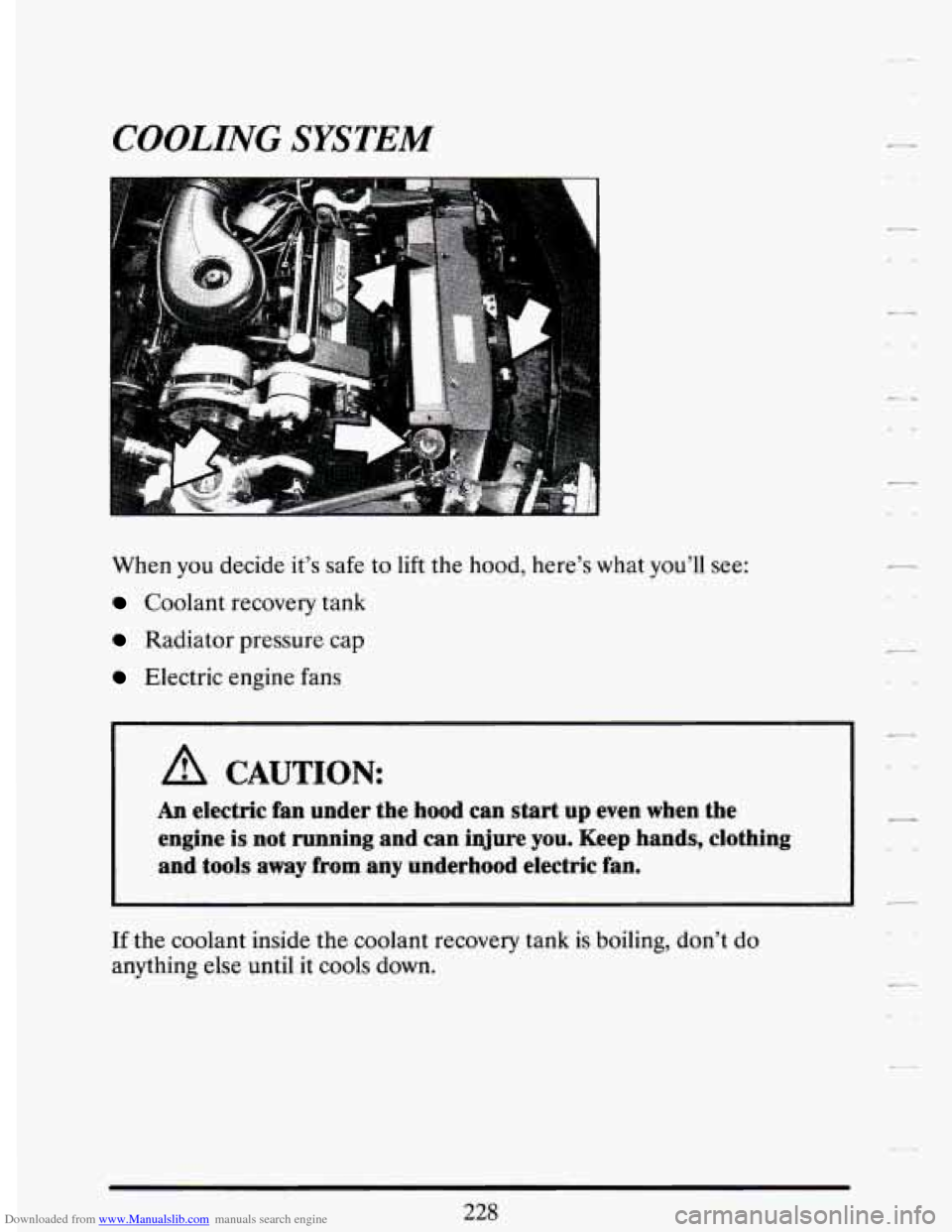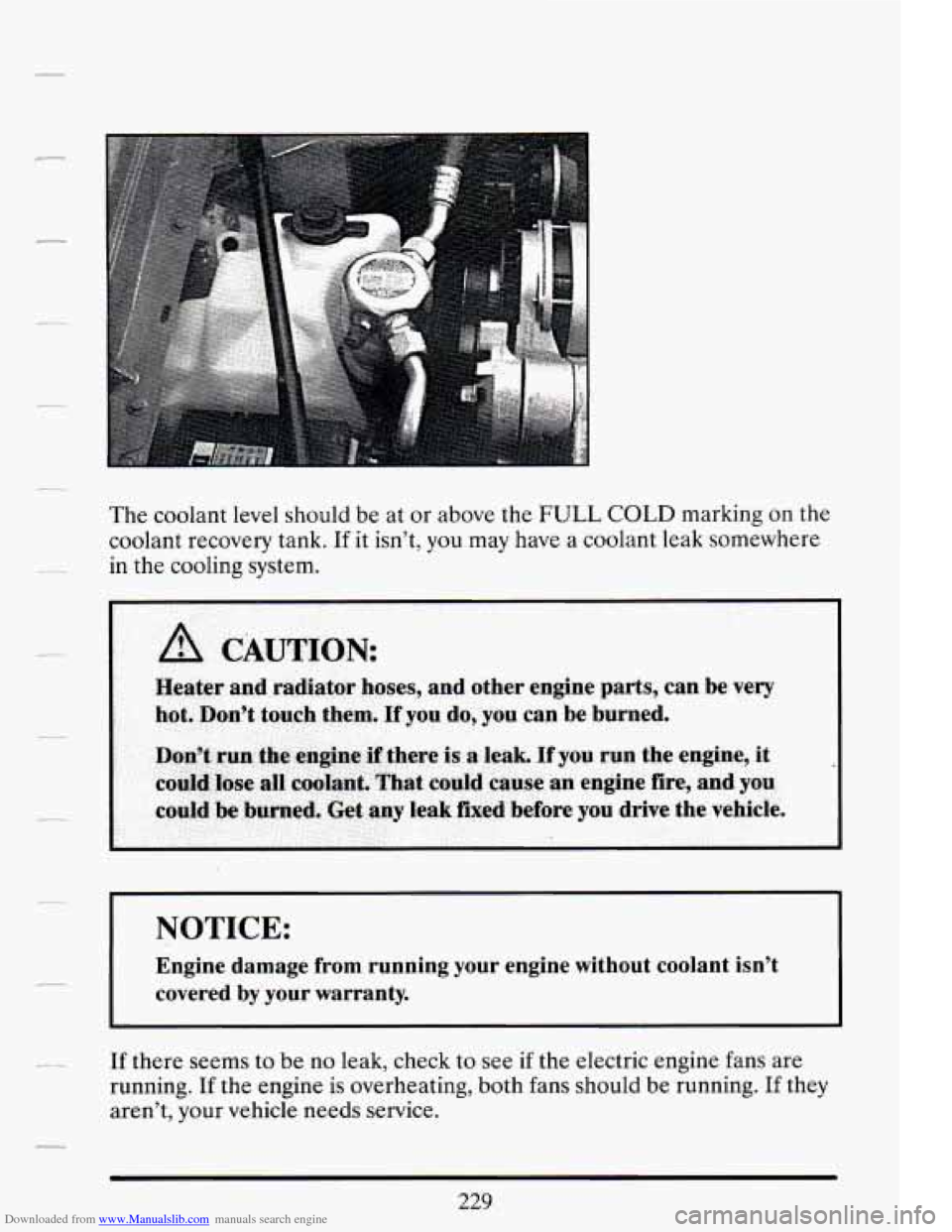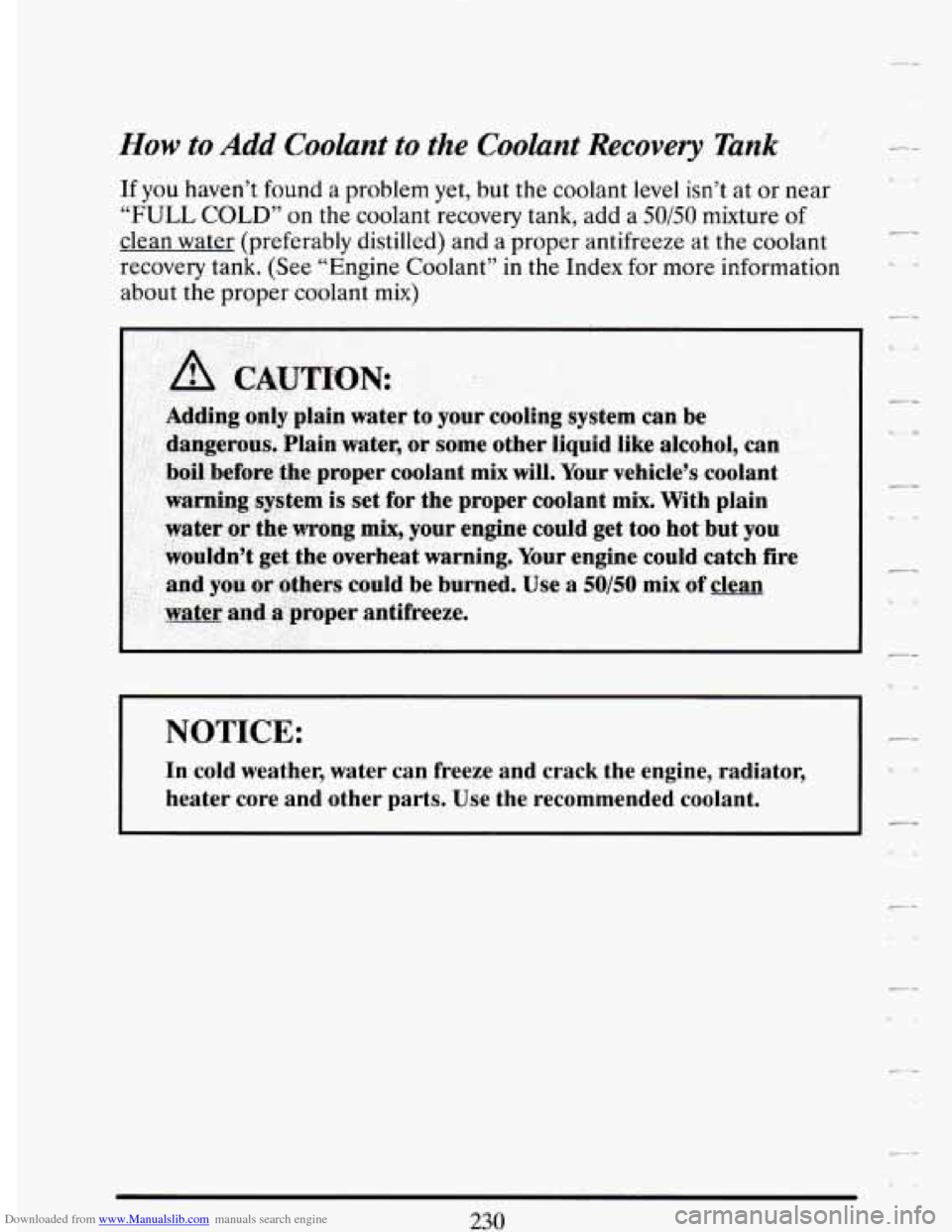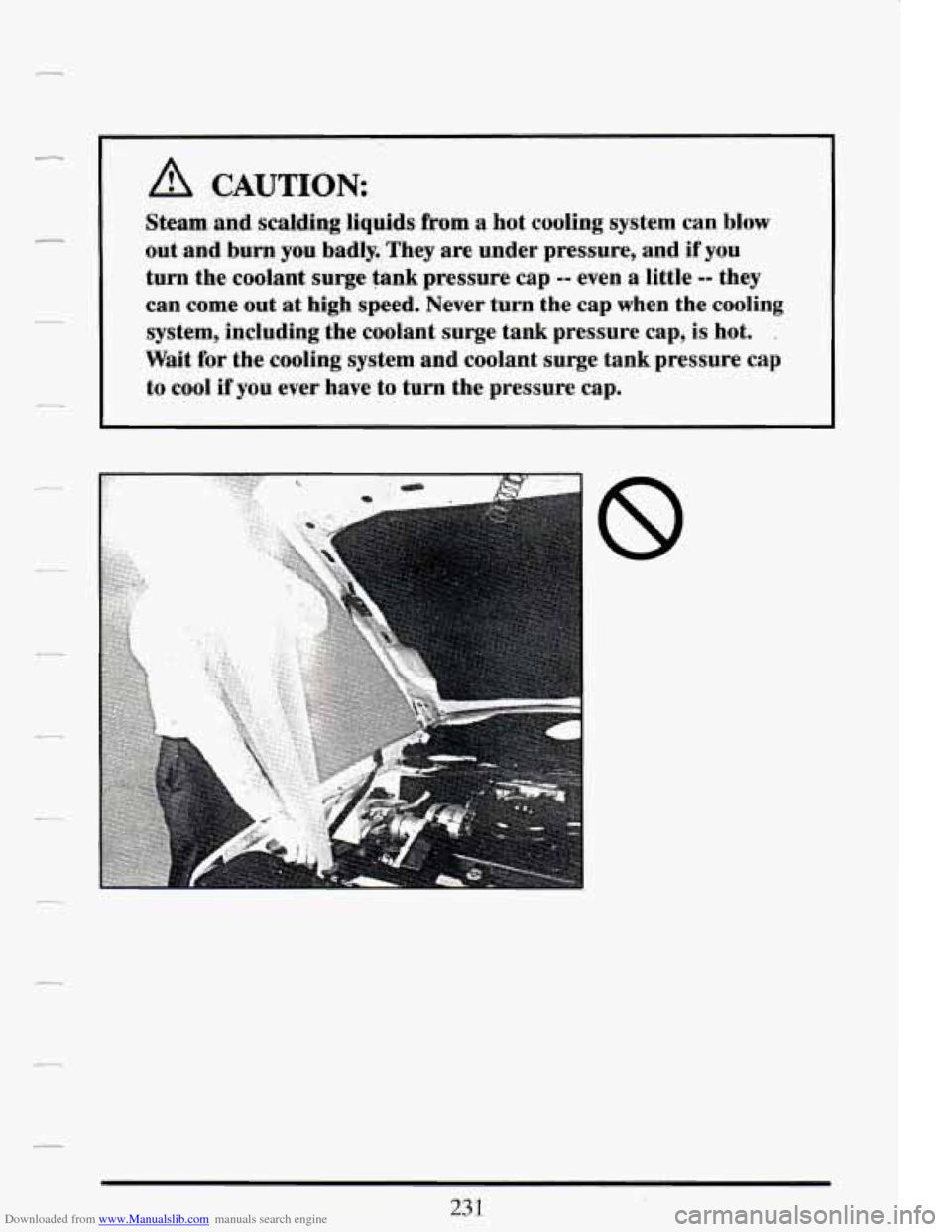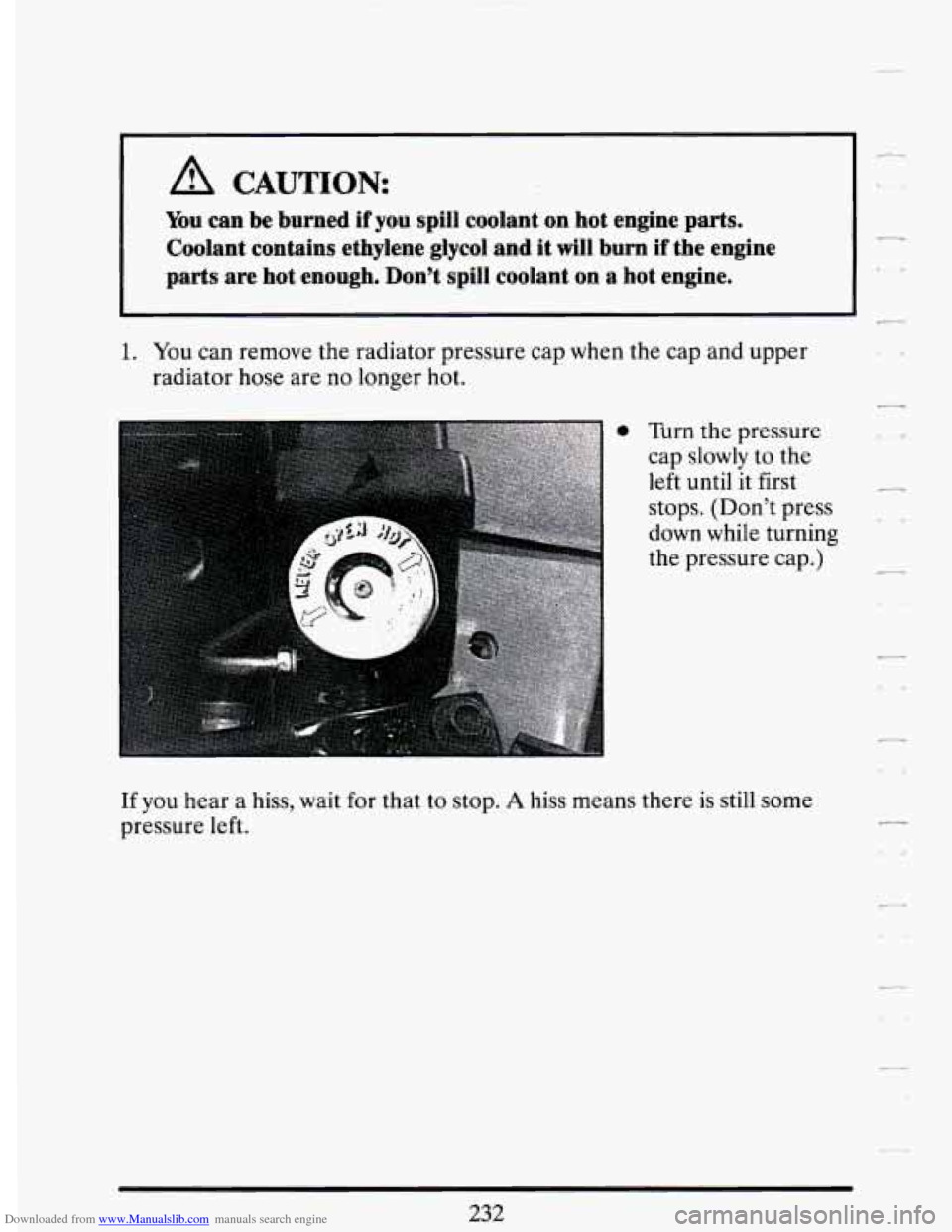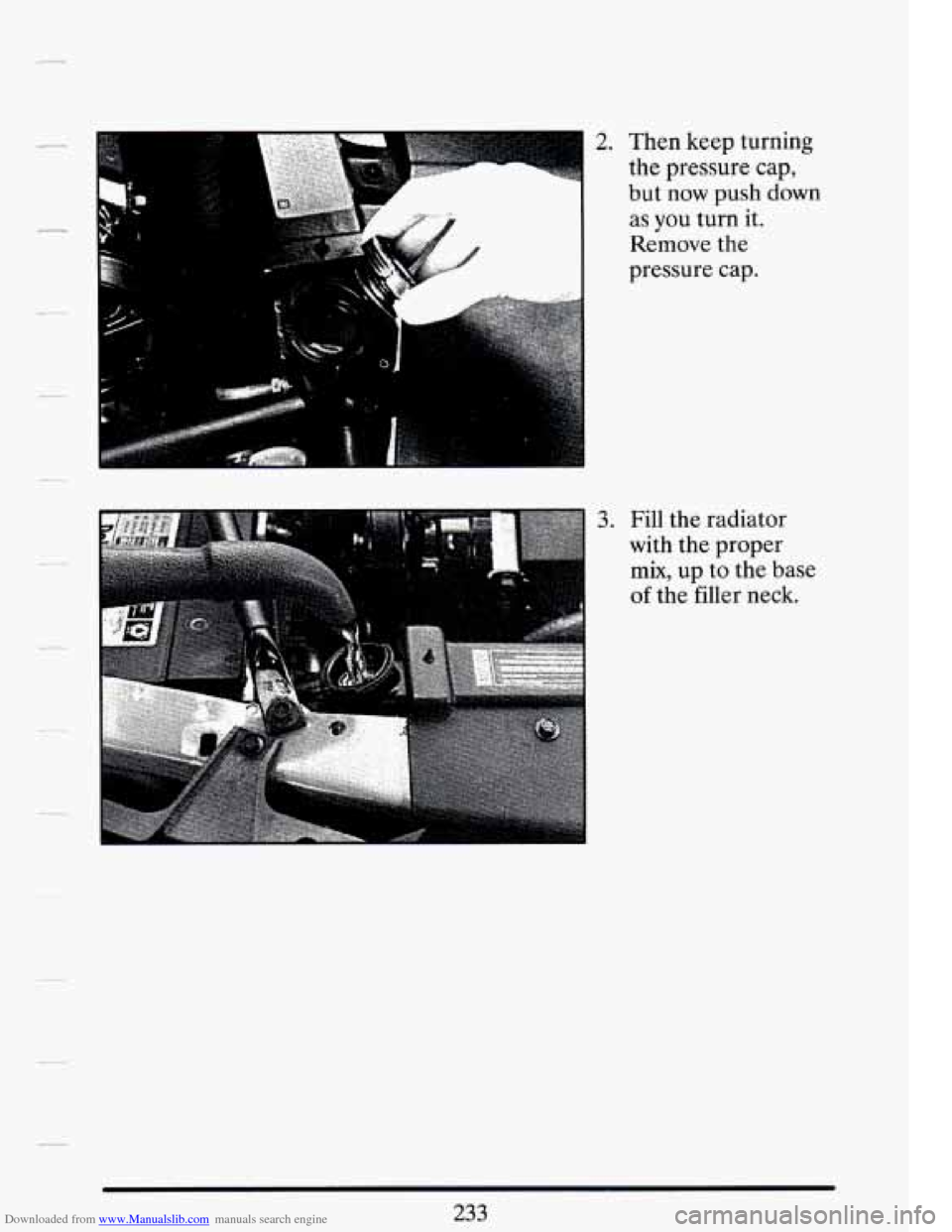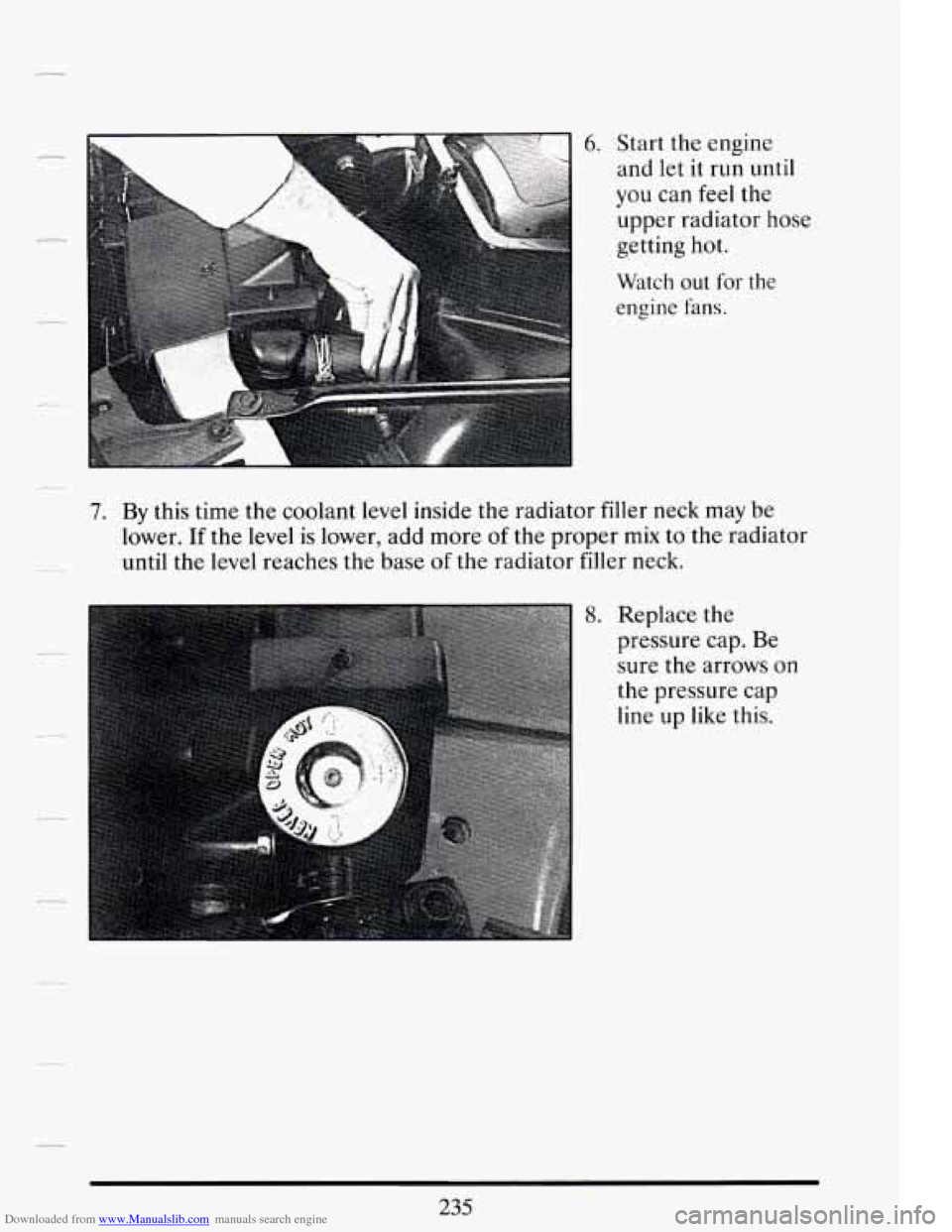CADILLAC DEVILLE 1994 7.G Owners Manual
DEVILLE 1994 7.G
CADILLAC
CADILLAC
https://www.carmanualsonline.info/img/23/7981/w960_7981-0.png
CADILLAC DEVILLE 1994 7.G Owners Manual
Trending: radiator cap, tire size, winter tires, oil pressure, jump cable, fuel reserve, wiring
Page 241 of 399
Downloaded from www.Manualslib.com manuals search engine COOLING SYSTEM
When you decide it’s safe to lift the hood, here’s what you’ll see:
Coolant recovery tank
Radiator pressure cap
Electric engine fans
. . ..~ . -~~ . .- - .
A CAUTION:
An electric fan under the hood can start up even when the
engine is not running and can injure
you. Keep hands, clothing
and
tools away from any underhood eIectric fan.
If the coolant inside the coolant recovery tank is boiling, don’t do
anything else until
it cools down.
Page 242 of 399
Downloaded from www.Manualslib.com manuals search engine The coolant level should be at or above the FULL COLD marking on the
coolant recovery tank.
If it isn’t, you may have a coolant leak somewhere
in the cooling system.
NOTICE:
Engine damage from running your engine without coolant isn’t
covered by your warranty.
If there seems to be no leak, check to see if the electric engine fans are
running.
If the engine is overheating, both fans should be running. If they
aren’t, your vehicle needs service.
229
Page 243 of 399
Downloaded from www.Manualslib.com manuals search engine How to Add Coolant to the Coolant Recovery Tank
If you haven’t found a problem yet, but the coolant level isn’t at or near
“FULL COLD” on the coolant recovery tank, add a 50/50 mixture of
clean water (preferably distilled) and a proper antifreeze at the coolant
recovery tank. (See “Engine Coolant” in the Index for more ififormation
about the proper coolant mix)
C-
NOTICE:
In cold weather, water can freeze and crack the engine, radiator,
heater core and other parts. Use the recommended coolant.
230
Page 244 of 399
Downloaded from www.Manualslib.com manuals search engine A CAUTION:
Steam and scalding liquids from a hot cooling system can blow
out and burn you badly. They are under pressure, and if you
turn the coolant surge
tank pressure cap -- even a little -- they
can come out
at high speed. Never turn the cap when the cooling
system, including the coolant surge tank pressure cap, is hot.
,
Wait for the cooling system and coolant surge tank pressure cap
to cool
if you ever have to turn the pressure cap.
23 1
Page 245 of 399
Downloaded from www.Manualslib.com manuals search engine You can be burned if you spill coolant on hot engine parts,
Coolant
contains ethylene glycol and it will burn if the engine
parts are hot enough. Don’t spill coolant on a hot engine,
I
I --
1. You can remove the radiator pressure cap when the cap and upper
radiator hose are no longer hot.
0 Turn the pressure
cap slowly to the
left until
it first
stops. (Don’t press
down while turning
the pressure cap.)
If you hear a hiss, wait for that to stop. A hiss means there is still some
pressure left.
232
Page 246 of 399
Downloaded from www.Manualslib.com manuals search engine 2. Then keep turning the pressure cap,
but now push down
as you turn it.
Remove the
pressure cap.
3. Fill the radiator
with the proper
mix, up to the base
of the filler neck.
Page 247 of 399
Downloaded from www.Manualslib.com manuals search engine 4. Then fill the
coolant recovery
tank to
the FULL
COLD mark.
5. Put the cap back
on
the coolant
recovery tank, but
leave the radiator
pressure cap
off.
234
c-
2.
LI
LA
Page 248 of 399
Downloaded from www.Manualslib.com manuals search engine 6. Start the engine
and let it run until
you can
feel the
upper radiator hose
getting hot.
Watch out for the
engine fans.
7. By this time the coolant level inside the radiator filler neck may be
lower. If the level is lower, add more of the proper mix to the radiator
until the level reaches the base
of the radiator filler neck.
8. Replace the
pressure cap. Be
sure the arrows on
the pressure cap
line up like this.
Page 249 of 399

Downloaded from www.Manualslib.com manuals search engine IFA TIRE GOES FLAT
It’s unusual for a tire to “blow out” while you’re driving, especially if you
maintain your tires properly. If air goes out of a tire, it’s much more likely
to leak out slowly. But
if you should ever have a “blowout,” here are a
few tips about what to expect and what to do:
If a front tire fails, the flat tire will create a drag that pulls
the vehicle
toward that side. Take your foot
off the accelerator pedal and grip the
steering wheel firmly. Steer to maintain lane position, then gently brake
to a stop well out of the traffic lane.
A rear blowout, particularly on a curve, acts much like a skid and may
require the same correction you’d use
in a skid. In any rear blowout,
remove your foot from the accelerator pedal. Get
the vehicle under
control by steering the way you want the vehicle to go. It may be
very
bumpy and noisy, but you can still steer. Gently brake to a stop, well off
the road if possible.
If a tire goes flat, the next section shows how to use your jacking
equipment to change a flat tire safely.
ro
t-
236
Page 250 of 399
Downloaded from www.Manualslib.com manuals search engine - CHANGING A FLAT TIRE
If a tire goes flat, avoid further tire and wheel damage by driving slowly to
a level dace. Turn on your hazard warning flashers. --
237
Trending: set clock, brake fluid, fuel filter, hood open, dimensions, change time, oil capacities
